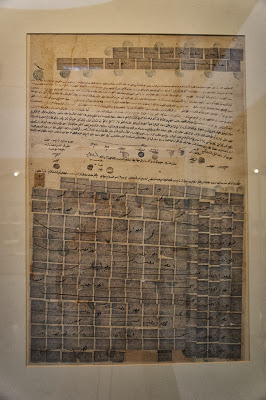7 Principles of Islamic architcture
Divine Inspiration: Seven Principles of Islamic Architecture
Seven Principles of Islamic Architecture is an exhibition that aims to illustrate the intrinsic relationship between Muslims, their beliefs and how these manifest themselves in everyday architecture. Islam embodies a way of life and serves as a cohesive force among ethnically and culturally diverse peoples. There is no essential difference between spiritual and secular art in Islam, allowing the virtues of Islamic architecture to transcend mere form and function.
Each of the key beliefs explored; Tawhid (Unity), Ihtiram (Respect), Ikhlas (Sincerity), Iqtisad (Moderation/ Humility), Haya’ (Modesty), ‘Ilm (Pursuit of Knowledge), Dhikr (Remembrance), will contextualise and shed light on the visible and invisible nature of both the Islamic belief discussed and its corresponding architectural principle. Covering examples from across the globe - discussing their cosmic dimensions - this exhibition will highlight the long interrupted tradition of sacred and scientific knowledge that has gained Islamic architecture a well-deserved reputation of outstanding nobility.
1. Architecture as Tawhid: Unity & Uniquity of Allah
- An Islamic building should focus on strengthening the bond between muslims within conformity of God's will
2. Architecture of Ihtiram: Respect
- An Islamic building should represent Muslims respect and obedience to Allah
3. Architecture with Ikhlas: Sincerity
- A Muslim architect should show sincerity and purity in their design motivation, and built within conformity to God’s will
4. Architecture as Pursuit of Ilm: Knowledge
- An Islamic building celebrates knowledge through calligraphy of religious Inscriptions and uses light as an expression of knowledge.
5. Architecture for Iqtisad: Balance
- An Islamic building should have harmony between functional and spiritual elements
6. Architecture of Haya’: Modesty
- An Islamic building should be discreet and preserve the dignity of its owner or users.
7. Architecture as Dikr: Remembrance
- An Islamic building should be an aid to remembrance of Allah





















.jpg)













